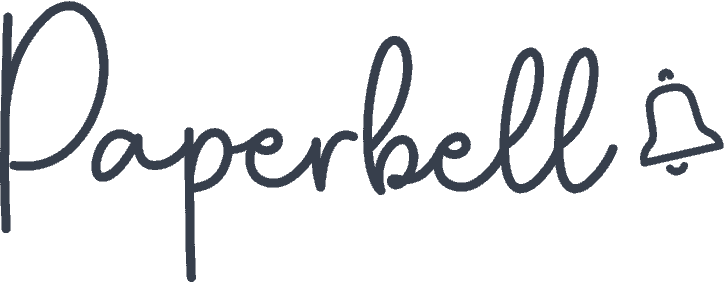Ever wonder why you can’t resist clicking on that online ad? Or why certain billboards catch your eye?
It’s no coincidence – advertising techniques are what drive people to take action. These are powerful tools marketers use to pull us in and make us take action.
If you’re a coach looking to grow your business, mastering these techniques could help you speed up your success.
That’s why we’ve put together some of the best advertising techniques specifically for coaches! Keep reading to discover:
- What are advertising techniques?
- 8 Advertising techniques to try for your coaching business
What Are Advertising Techniques?
If you’re an online coach, the right advertising techniques can be your game-changer. They are the methods and strategies used to promote your coaching services to prospective clients using paid advertising.
Ad campaigns, when done correctly, help you stand out against your competitors. They make you top of mind for people who may struggle with the problems you help solve.
And while it’s possible to launch some ad campaigns without specific techniques, there’s a good chance they won’t convert.
Advertising techniques, on the other hand, are tried and tested strategies that other advertisers – including coaches – have already validated. Instead of starting from scratch, you get to build off the shoulders of giants who have already figured some things out.
However, I’d like to highlight the difference between an advertising strategy and an advertising technique:
Your strategy is the overall way you’re going to approach a paid advertising campaign. On the other hand, techniques are what you’ll do on a micro level. They may dictate what type of videos you use or how you write your ads, while the strategy will decide on the entire ecosystem of your ads.
8 Advertising Techniques to Try for Your Coaching Business
Now that you understand what advertising techniques are and why they’re important, let’s go over some of the best advertising technique examples for coaches!
1. Social Proof
Social proof is an incredibly powerful tool to build credibility, especially when targeting cold traffic with your paid ads. It’s no wonder it has become one of the most common advertising techniques for coaches.
By showcasing testimonials and reviews from satisfied clients, you demonstrate the effectiveness of your services and tap into a fundamental aspect of human psychology.
Here are some tips to help you make the most of social proof in your advertising campaigns:
- Try to collect testimonials from a wide range of clients to showcase the versatility and adaptability of your coaching services
- Encourage willing clients to share their experiences on camera – real, heartfelt messages from satisfied clients can be incredibly persuasive!
- Showcase the journey of your clients – where they started, the challenges they faced, and how your coaching helped them overcome these obstacles
- If clients mention or tag you on their social media, with their permission, use these mentions as informal testimonials
By strategically leveraging social proof, you can improve your online coaching’s perceived value and trustworthiness!
2. Going ‘Behind the Scenes’
The “behind the scenes” approach involves giving potential clients a glimpse into the inner workings of your coaching process. This creates a sense of trust and intrigue. You get to show the human and relatable side of your business!
You can leverage the “behind the scenes” of your business in several ways, but let’s talk about the three main ways you can do this in paid ads: video, images, and/or text.
Let’s say you want to use video. This could include:
- Preparing for coaching sessions
- Brainstorming ideas for client growth
- Snippets of your day-to-day work life
For example, Laurel Portié breaks down her multi-platform advertising funnel in a video ad on Facebook:

Video is great for behind-the-scenes content because it shows you doing your thing behind the scenes. But if you prefer using text and images, you can do that, too.
Instead of relying on video, you can showcase one image of your “behind-the-scenes” scenario and use copywriting to describe the situation. Just tie it back to what you’re offering in your ad.
For example, you can write something like:
“This is what you’ll get when you book a free strategy call.”
This transitional sentence helps you go from your behind-the-scenes content to your desired call-to-action in a way that ties everything together!
3. Emotional Appeal
Using emotional appeal as an advertising strategy involves creating ads that resonate with your potential clients on a deeper, more personal level. You tap into the emotions that drive their desires for change, improvement, or personal growth – the core reasons they might seek coaching in the first place!
This is yet another one of the most common advertising techniques for coaches.
So, what can emotional appeals look like in ads promoting your coaching business?
- Develop a narrative-based video ad: Create a short, compelling video that tells a story. This could be the journey of a client who overcame significant challenges with the help of your coaching. The narrative should focus on the emotional aspects – the struggles, the breakthrough moments, and the eventual triumph 🙂
- Use strong, relatable imagery: Design image ads that feature relatable, emotionally charged visuals. For instance, an image showing someone standing at a crossroads can symbolize the decision to change one’s life, a concept many seeking coaching can relate to. Pair these images with impactful, dynamic copy that speaks directly to the viewer’s aspirations or pain points.
- Incorporate client testimonials focused on emotional transformation: Yup, we’ve talked about this one! Use testimonials that emphasize the emotional journey of your clients. Rather than just focusing on outcomes, highlight the emotional transformation they experienced – how they felt before and after the coaching.
- Leverage music in audio and video ads: Music can significantly amplify the emotional impact of your ads. Choose tracks that align with the mood and tone of your message – uplifting, inspiring, or even contemplative. This can improve the emotional depth of your video or audio content.
- Highlight the emotional benefits of coaching in your copy: In your ad copy, focus on the emotional rewards of what your coaching program will bring – the sense of empowerment, confidence, peace, or fulfillment it can bring. Use language that evokes these feelings and vividly depicts the emotional journey.
It’s important to take the time to research your audience to understand what will help you appeal to their emotions. But you’ll also need to test a few ad variations to see what resonates with them best!
4. The Bandwagon effect
The Bandwagon effect advertising technique is similar to using social proof, but it’s a bit bigger than that. This technique plays on people’s desire to belong. It shows prospects that others benefit from your services and encourages them to join in, too.
No one likes being left out.
This advertising technique is especially effective if you have a group coaching program. You can rapid-fire testimonial clips from several clients, one after another, to show just how many people have benefited from your help.
An alternative way to use bandwagon advertising is to try user-generated content. Instead of having some of your clients create testimonials, you could have them speak about other parts of their experience that aren’t directly tied to their end result.
They could speak about:
- What one of the specific coaching calls was like
- An interaction they had with other members of the group (if this is group coaching)
- A specific exercise or lesson they did and what that was like
In short, your goal will be to show that real people are going through your coaching program. Too many coaches focus solely on marketing their business and getting new clients, not so much on making their program amazing.
The bandwagon effect can prove that you prioritize client experience above all else.
5. Storytelling
Using storytelling in your advertising campaigns is a powerful advertising technique, as it allows you to connect with your audience on a deeper, more emotional level. It helps you craft a narrative that resonates with your audience’s experiences, aspirations, or challenges.
Start by identifying a common challenge or aspiration that your target audience faces. This could range from achieving work-life balance to overcoming specific career obstacles.
Your story should then revolve around a character or real person representing your target audience, detailing their journey from facing the challenge to finding a solution through your coaching program.
Make your narrative relatable and authentic. This will allow potential clients to see themselves in the story.
Remember that great visual advertising technique is crucial in storytelling and visual content alone might not convey the full story or emotional appeal essential in advertisements. Use videos or images that complement your narrative to make the story more engaging and memorable. For example, you can add voiceover to Adobe Premiere videos for compelling ad narratives that seamlessly blend visuals and sound for greater impact. You can show pictures or video clips if it applies to the situation.
Additionally, use storytelling to convey your unique approach or philosophy. Instead of just listing your methods, illustrate how these methods have impacted someone’s life. This approach informs your audience about your coaching process and demonstrates its effectiveness in a real-world context.
Finally, always include a clear call to action in your story. Guide your audience on what to do next if inspired or moved by your narrative. The call to action is crucial in turning emotional engagement into tangible action.
You don’t have to go too deep in your stories to make them effective. Let’s look at some ads from Mike Shreeve at Peaceful Profits.
Most of his ads start with the beginning of a story. Then, they segue into the offer he’s making.
Here’s an example:
A while back, I replaced just about all my marketing efforts with just one piece of content.
Course sales soared, and I was able to rapidly add 700+ students to my premium coaching program without using any high-pressure sales tactics to do it.
What did I use?
A book that took me just a couple of days to write and the method to sell it you can learn here:
I like how he starts his storytelling ads because they don’t feel like ads. It just feels like a conversation.
Here is another of his ad openers:

Play around with storytelling and see what works for your audience!
6. Motion Graphics & animation
A picture may be worth a thousand words, but an animation? That’s priceless. Animated videos simplify complex topics while keeping audiences engaged — perfect for explaining intricate coaching methods.
But if you don’t want to use intense animation in your visual advertising, you can also sprinkle in motion graphics and emojis to add movement to the screen.
Here’s an example of a coach who uses dynamic text to grab attention:

Like with everything else on this list, play around with this visual advertising technique to see what works. You won’t know what type of visual marketing your ideal clients respond to until you’ve tried it.
7. Leveraging stats and figures
People trust numbers. Including impressive statistics about your coaching success rates as an advertising method can make your ads more convincing.
But if you don’t have your own statistics, consider other sources of stats and figures. For example, as an email marketing coach, I consistently use the following statistics to convince people of the importance of using email and sending emails frequently:
- 99% of email users check their inbox every day
- 78% of marketers say subscriber segmentation is the most effective strategy to increase ROI
- 79% of B2B marketers find email to be the most successful channel for content distribution
But you can apply this technique to your own coaching niche, too!
8. Incentives
Why should people who come across your paid ads take action now?
One of the most popular digital advertising techniques is to offer some type of incentive for people to take action now. In the context of coaching, the incentive will depend on several factors, such as:
- Your coaching business model
- The types of offers you sell
- What the ad is for (free call, low-cost digital product, lead magnet, etc.)
A great incentive will typically counter an objection that prospective clients may have to take action. For example, let’s say you want them to book a free call with you. One objection may be:
“Ugh, this will be just another sales call!”
To counter this objection, you could incentivize people to book the call by letting them know they’ll walk away with a roadmap of what to do next, regardless of whether they decide to work with you or not. You could also offer a free resource to anyone who books the call.
Try These Paid Advertising Techniques To Land More Coaching Clients
The right advertising techniques can help you stand out online and attract more clients. You’ve got plenty of strategies to choose from – behind-the-scenes peeks, emotional appeals, bandwagon effects, storytelling… The list goes on. When launching these advertising methods, pick what resonates with your brand and audience most.
Remember that good ads don’t just sell coaching… they tell stories.
They evoke emotions. They persuade people through logic or statistics and by appealing to their hearts. So make sure your ad does that, too.
You’ve learned how methods like storytelling and emotional appeal draw in potential clients.Need help streamlining the admin side of your coaching business so you have more time to fine-tune your advertising? With Paperbell, running a coaching business online has never been easier! Try it for yourself by claiming your free account.










